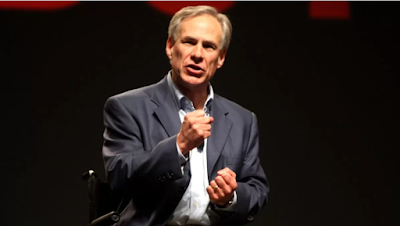 |
Texas Gov. Greg Abbott (Gage Skidmore/Flickr)
After Texas became the first state to eliminate both its face mask mandate and its business occupancy limits in early March, President Joe Biden said the decision reflected «Neanderthal thinking.» Gilberto Hinojosa, chairman of the Texas Democratic Party, described Gov. Anthony Fauci, Biden’s top COVID-19 adviser, said lifting mask mandates «is really quite risky,» because «when you pull back on measures of public health, invariably you’ve seen a surge» in cases and deaths.
A new analysis by three economists confirms that his decision had no discernible impact on COVID-19 cases or deaths in Texas. «We find no evidence that the Texas reopening led to substantial changes in social mobility, including foot traffic at a wide set of business establishments in Texas,» Bentley University economist Dhaval Dave and his two co-authors report in a National Bureau of Economic Research working paper.
«We find no evidence that the Texas reopening affected the rate of new COVID-19 cases during the five weeks following the reopening.» They say their findings «underscore the limits of late-pandemic era COVID-19 reopening policies to alter private behavior». Dave, San Diego State University economist Joseph Sabia, and SDSU graduate research fellow Samuel Safford looked at smartphone mobility data from SafeGraph and COVID-19 data collected by The New York Times.
They compared trends in Texas before and after Abbott’s order took effect on March 10 to trends in a composite of data from other states that retained their COVID-19 restrictions but were otherwise similar. «We find that the Texas reopening had little impact on stay-at-home behavior or on foot traffic at numerous business locations, including restaurants, bars, entertainment venues, retail establishments, business services, personal care services, and grocery stores,» Dave et al.
«We find no evidence that the reopening affected the rate of new COVID-19 cases in the five-week period following the reopening. In addition, we find that state-level COVID-19 mortality rates were unaffected by the March 10 reopening». suggest several possible reasons why the Texas reopening did not have the impact that its opponents anticipated. Second, «it may be that there was limited compliance with and enforcement of mask mandates or capacity constraint requirements prior to the March 10 reopening.» Third, removing occupancy limits, which were previously 75 percent of capacity for most businesses and 50 percent for bars and professional sports, may have been too minor a change to «affect net population-based social mobility and statewide spread of COVID-19».
Finally, the authors say, «it may be that the types of individuals who were affected by the policy» were «those least likely to affect the trajectory of COVID-19 growth.» Or perhaps «any increase in social mobility or COVID-19 caused by such individuals was offset by others in the community who engaged in risk avoiding behaviors in response to the reopening». This study does not prove that lockdowns or less severe COVID-19 restrictions had no initial impact on risky behavior.
While there is evidence that stay-at-home orders and mask mandates «were effective in curbing COVID-19 spread early in the U. » say, «a number of studies have documented that account for a relatively small share of the total variation in individuals’ COVID-19 mitigation behavior.» Those studies indicate that «most of the variation can be attributed to voluntary private demand-side responses, likely due to new or updated information on the novel coronavirus, or changes in individuals’ assessments of contagion risk and developing serious COVID-19 symptoms».
Even without lockdowns, in other words, businesses would have suffered as consumers afraid of catching COVID-19 reduced their excursions and spending.Likewise, Abbott’s remaining COVID-19 restrictions were hardly the only obstacle to a full economic recovery in Texas.
Source: Jacob Sullum | Reason
No comments:
Post a Comment